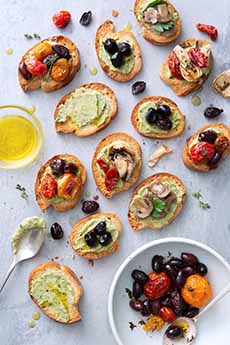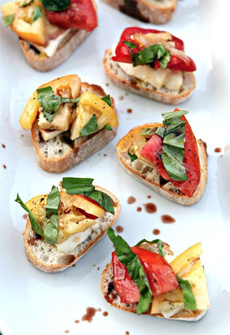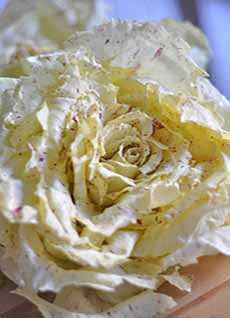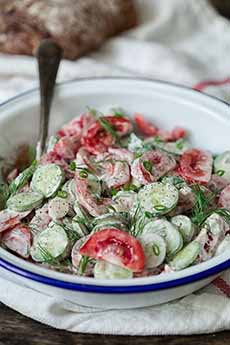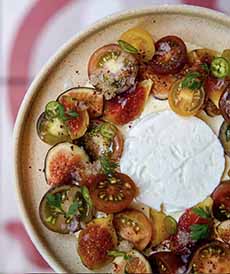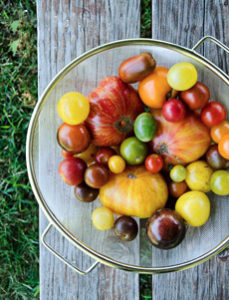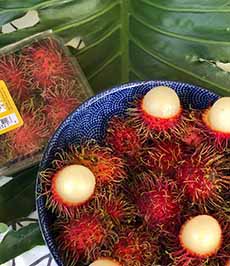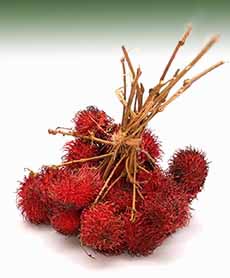|
Yo-ho-ho and a bottle of rum: August 16th is National Rum Day. (Here’s the pirate song, inspired by Robert Louis Stevenson’s Treasure Island.)
Many thanks to Pat Croce’s Rum Barrel sports bar and grill in Key West (now closed, alas) for much of this information.
WHAT IS RUM?
Everyone who knows the word knows that rum is a spirit. But did you know it was a spirit distilled from sugar cane?
Sugar cane, native to Papua, New Guinea, was brought to the Caribbean by Spanish explorers. It is believed that Christopher Columbus planted it on his second voyage to Cuba and Hispaniola (the latter, now Haiti and the Dominican Republic).
Molasses, from which rum is distilled, is the by-product of sugar refining, the process of turning sugar cane juice into granulated sugar.
The sweet juice of sugar cane stalk is extracted by pressing the hard stalk in mechanical mills.
The juice is boiled, which produces cane syrup. Eventually, the sugar crystallizes out of the syrup.
The remaining dark liquid is molasses.
If the molasses is further boiled, it creates different degrees of molasses: light, dark/medium, treacle and blackstrap molasses.
HOW RUM CAME TO BE
The pressing of cane to produce cane juice, and then boiling the juice until it crystallized, was developed in India as early as 500 B.C.E.
In India today, the molasses is used mainly in manufacture of industrial and drinking alcohol, yeast and cattle feed. But we have no record as to what the ancients did with the molasses.
Certainly, they didn’t distill it into a spirit or the liquor would have made its way to the Caribbean and the Middle East, along with the sugar cane plants.
When sugar cane began to be grown and refined in the Caribbean, the white plantation occupants didn’t like the molasses by-product.
So the plantation slaves were allowed to take the strong-smelling, sticky mess. One of them discovered that it could be turned into an alcoholic drink, that we now call rum.
HOW RUM GOT ITS NAME
Scotch is named for Scotland, bourbon for Bourbon County, Kentucky, tequila for the town of Tequila in Mexico, and so on. What about rum? There’s no location by that name.
The etymology of the word can be traced to this source from 1651:
The chiefe fudling they make in the Island [i.e. Barbados] is Rumbullion alias Kill-Devill, and this is made of suggar cane distilled, a hott, hellish and terrible liquor. [Source: “A briefe Description of the Island of Barbados,” 1651].
Rumbullion means “a great tumult or uproar.”
“Fudling” is a misspelling of fuddling, from the verb to fuddle, meaning to confuse or stupefy [someone], especially with alcohol.
It also meant “to go on a drinking bout,” after which one’s brain could be “fuddled,” a variation of the modern “befuddled.”
So: Drink enough rumbullion and you’ll be quite fuddled, among other conditions.
The are other contenders to the name “rum,” claiming that:
The name comes from the large drinking glasses called rummers, used by Dutch (the Dutch word roemer indicates a drinking glass).
The name is a contraction of the words saccharum (Latin for sugar) or arôme (French for aroma).
The name had come into common use by May 1657 when the written record of the General Court of Massachusetts made the sale of strong liquor illegal…
“whether knowne by the name of rumme, strong water, wine, brandy, etc., etc.”
HOW RUM IS MADE
Some craft distillers today make rum from the fresh cane juice; but most rum is still made from molasses.
Yeast is added to the cane juice or molasses, and converts the sucrose to alcohol (fermentation). Typically this takes about a day (some distilleries use yeast that takes as much as 19 days to ferment).
The sugar cane wine, as it is called, is distilled by boiling it in a pot still (or the modern continuous still, for mass production), collecting the vapor and condensing it. While the earliest pot stills resembled a tea kettle with a long spout and were capable of distilling.
After distillation, the fresh/raw spirits contain small amounts of hydrogen sulfide gas that are formed during fermentation. They give the spirit a hot, harsh taste. While some people enjoy it, most consumers prefer the their spirits aged.
Rum is aged in used oak barrels purchased from bourbon or whiskey or distillers. The longer it ages in barrels, the darker the spirit becomes via interaction with elements in the wood. Colors go from pale to deep gold to brown to dark brown (photo #1).
Aged spirits are often blended before they are bottled. Blending is done for two main reasons:
Because they are aged in different barrels, different barrel batches can taste different. Here, blending is done to develop a consistent flavor, particular to the brand.
Each agricultural harvest is different. In a light year, spirits from more flavorful years are blended to achieve the house style.
Once the spirit is bottled, the aging process is arrested and little change occurs.
THE DIFFERENT TYPES OF RUM
See our earlier article on the different types of rum.
CARIBBEAN RUMS
Anguilla (example: Pryat)
Barbados (examples: Malibu, Mount Gay)
Bermuda (example: Gosling’s)
|
|

[1] The longer rum is aged, the darker it gets. Here, three expressions from Bacardi.
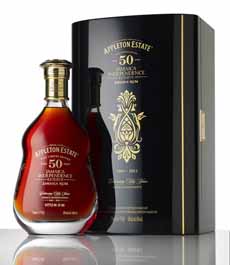
[2] If you have to ask, you can’t afford it…but this 50-year-old rum from Appleton Estate is A “regular” bottle of 50-year-old can be found for $499. But a limited edition of 50-year-old was laid down just before Jamaica received its independence in 1962. A bottle is $5500.

[3] A bottle of rum from 1830 (photo © 109 Gizmondo).
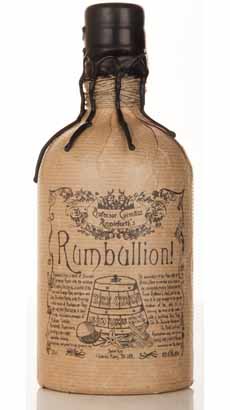
[4] A modern distillallation with a heritage name: Rumbullion is a spiced rum made exclusively for Master of Malt (photo © Master Of Malt).

[5] Aged rum on the rocks. Aged rum is for sipping, not mixing (photo © Appleton Estate).
|
|
Dominican Republic (examples: Barcelo, Brugal, Cubaney, Matusalem)
Haiti: (example: Barbancourt)
Jamaica: (examples: Appleton, Myers, Plantation, Sea Wynde)
Netherlands Antilles (example: Rum Jumbie liqueur)
Puerto Rico (examples: Admiral Nelson, Bacardi, Captain Morgan, Don Q, Old Havana Club)
St. Kitts (example: Brinley)
Trinidad (examplea: Fernandes, Plantation)
Virgin Islands (example: Conch, Cruzan, Sailor Jerry)
CENTRAL & SOUTH AMERICA RUMS
Colombia (example: Ron Viejo de Caldas (actually a cachaca)
Guatemala (example: Ron Zacapa, Zaya)
Guyana (example: El Dorado and other Demerara rums (named for the Demerara River)
Mexico (examples: Kuya, Porfidio)
Nicaragua (example: Flor de Cana)
Panama (examples: Cohete Roja, Panama Jack)
Venezuela (example: Pampero, Santa Teresa)
OTHER RUMS
U.S.(example: Pritchard, Whaler’s Rare Reserve)
Rums are also produced in Australia, India and other tropical countries, but are typically not available in the U.S.
STYLES OF RUM
While rum is not standardized among countries in terms of proof, years of age, etc., styles can generally be grouped according to the country of origin.
Spanish-speaking islands traditionally produce light rums with a fairly clean taste. Rums from Cuba and Puerto Rico are examples of this style. The word in Spanish is ron (ROAN).
Dominican rum (Spanish-speaking) is produced through a more natural process of distillation; aging is often done in American white oak barrels. This makes the rum a little heartier and a little less sweet than other rums made in Jamaica (English) and Barbados (English).
English-speaking islands are known for darker rums with a fuller taste that retain a greater amount of the underlying molasses flavor. Rums from Jamaica and the Demerera region of Guyana (English), on the northern coast of South America, are typical of this style. Barbados rum is recognized as one of the finest (and strongest) in the world.
French-speaking islands are best known for their agricultural rums (rhum agricole). These rums, produced exclusively from sugarcane juice, retain a greater amount of the original flavor of the sugarcane. Rums from Martinique and Guadeloupe are typical of this style. The word in French is rhum (ROOM).
|
